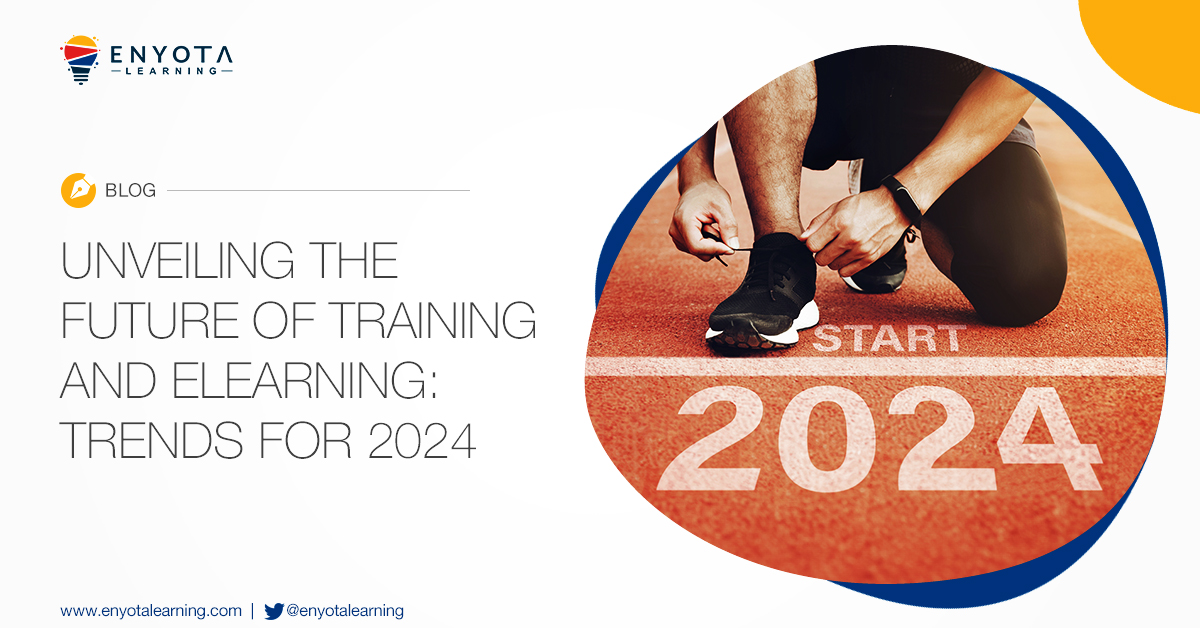In the ever-evolving landscape of education and professional development, training and eLearning continue to play a pivotal role. eLearning has experienced significant growth and transformation within the education industry over the years, and this growth is expected to continue in the coming years.
Let’s briefly explore the growth of eLearning in the training industry and the key factors driving its expansion:
-
Accessibility and Flexibility
eLearning has democratized education by making it accessible to a broader audience. Learners can access educational content from anywhere with an internet connection, eliminating geographical constraints. This flexibility is particularly valuable for adult learners, working professionals, and those with busy schedules.
-
Cost-Effectiveness
Traditional education often involves substantial expenses related to trainer costs, physical infrastructure, and commuting. eLearning reduces many of these costs, making education more affordable.
-
Personalized Learning
eLearning platforms use algorithms and data analytics to tailor learning experiences to individual learners. Adaptive learning technologies assess learners’ progress and adapt the content to their needs, enhancing the overall learning experience.
-
Diverse Learning Formats
eLearning encompasses a wide range of learning formats, including video lectures, interactive simulations, quizzes, eBooks, etc. This diversity caters to various learning preferences, making education more engaging and effective.
-
Global Reach
eLearning has transcended borders, allowing learners to access courses from across the globe, in multiple languages. This global reach enables a richer exchange of knowledge and expertise.
-
Skill Development and Professional Training
Beyond traditional academic education, eLearning is widely used for professional training and skill development. Many organizations and industries rely on eLearning to provide continuous learning opportunities to their employees.
-
Gamification and Engagement
Gamification elements such as badges, leaderboards, and rewards, make eLearning engaging and motivate learners to complete courses. Gamified eLearning platforms have seen increased adoption, especially in corporate training and skill development.
-
Learning Management Systems (LMS)
Learning management systems have become pivotal in the management and delivery of eLearning content. LMS platforms provide educators with tools to create, organize, and track courses, as well as monitor student progress and performance.
-
Mobile Learning
The proliferation of smartphones and tablets has given rise to mobile learning (mLearning). eLearning materials are often designed to be responsive and accessible on mobile devices, allowing learners to access content on the go.
-
Continuous Technological Advancements
The rapid evolution of technology has enabled eLearning to continually improve. Innovations like artificial intelligence, augmented reality, and virtual reality are being integrated into eLearning, enhancing its effectiveness and engagement.
-
Covid-19 Pandemic Acceleration
The COVID-19 pandemic accelerated the adoption of eLearning, as many educational institutions and organizations shifted to online learning to ensure continuity during lockdowns and social distancing measures. This crisis emphasized the importance of flexible and remote learning solutions.
As we look ahead to 2024, it’s essential to stay ahead of the curve and anticipate the emerging trends that will shape the way we learn and develop. In this blog, we’ll explore some of the most significant training and eLearning trends that are set to redefine the way we acquire knowledge, skills, and competencies in the coming year.
Artificial Intelligence (AI)
Artificial Intelligence is set to revolutionize the training and eLearning landscape in 2024. AI can generate educational content, including quizzes, scenarios, activities, etc. AI-powered chatbots and virtual tutors will provide instant assistance, enhancing the overall learning experience. This will help streamline content creation for L&D Teams. However, AI-generated content may lack the depth and creativity that human Subject Matter Experts (SMEs) provide, affecting the overall quality of the materials. Plus, you need to build your own brand and culture into the training which will require access to a skilled team. Invest in a training partner who knows how to leverage both.
Microlearning
The demand for bite-sized, on-the-go learning will only increase in 2024. Microlearning involves short, focused modules that allow learners to acquire information quickly and conveniently. It’s ideal for busy professionals and learners with short attention spans. Expect to see more platforms offering microlearning content.
Gamification
Gamification is a trend that has been growing steadily, and it’s not going away anytime soon. In 2024, more eLearning courses and training platforms will incorporate game elements to enhance engagement and motivation. Leaderboards, badges, and in-game rewards will make learning more fun and competitive.
Mobile Learning
With the prevalence of smartphones and tablets, mobile learning will continue to be a crucial trend in 2024. Training and eLearning materials will be optimized for mobile devices, allowing learners to access content on the go. Responsive design, mobile apps, and offline access options will make mobile learning even more accessible. It’s a great time to consider a mobile-friendly LMS as well!
Video-Based Learning
Video has proven to be an effective tool for conveying information and engaging learners. In 2024, expect to see an increase in video-based microlearning. Video allows for visual and auditory learning, making it a versatile medium for various subjects.
Blended Learning
Blended learning offers flexibility for both trainers and learners. It allows for personalized learning experiences while also integrating the flexibility of digital training. Combine great classroom training with online/digital components like microlearning, explainer videos, assessments, and just-in-time mobile learning. Procuring a learning management system that provides the ability to conduct classroom sessions as well as host interactive SCORM material is the need of the hour.
Social Learning and Collaborative Tools
Collaborative learning environments and social platforms will continue to be an essential part of training and eLearning in 2024. Learners will connect with peers and instructors through discussion forums, chat rooms, and collaborative projects. These tools foster interaction, engagement, and the exchange of ideas.
Data-Driven Insights
Data analytics and learning management systems (LMS) will play a crucial role in shaping training and eLearning strategies in 2024. By analyzing learner data, organizations can make data-driven decisions to improve course content, delivery methods, and overall effectiveness. This ensures that learning programs remain relevant and beneficial.
Accessibility and Inclusivity
In 2024, there will be an increased focus on making eLearning materials accessible to all, including individuals with disabilities. Every learner is unique, and eLearning must cater to a wide range of learning styles, preferences, and abilities. Some learners may require accommodations, such as screen readers or captioning, to access content effectively. Inclusivity ensures that the educational materials are adaptable to these varied needs. Compliance with accessibility standards and the use of assistive technologies will be key in ensuring that no learner is left behind.
Conclusion
As we approach 2024, the training and eLearning landscape will continue to evolve, driven by technological advancements, changing learner expectations, and a growing emphasis on accessible and inclusive education. Embracing these emerging trends will be crucial for organizations and educational institutions looking to stay ahead in this dynamic field. By leveraging AI, microlearning, gamification, and other innovative strategies, we can look forward to more engaging, personalized, and effective learning experiences in the years to come.





